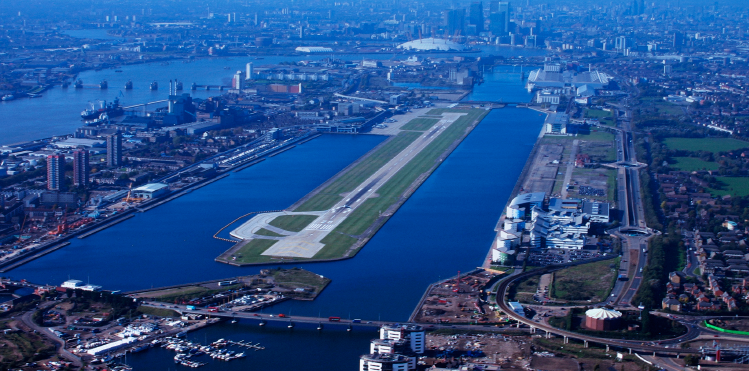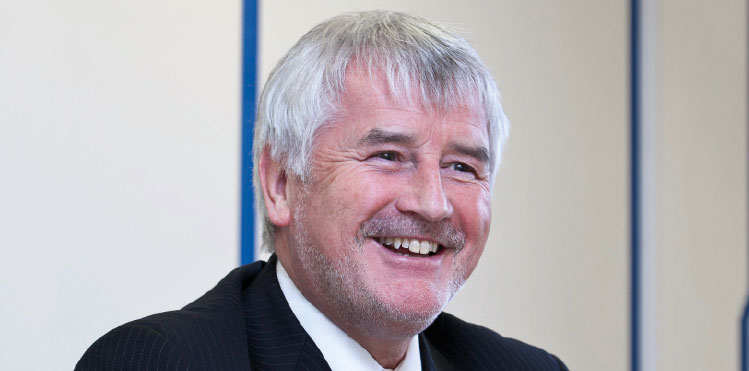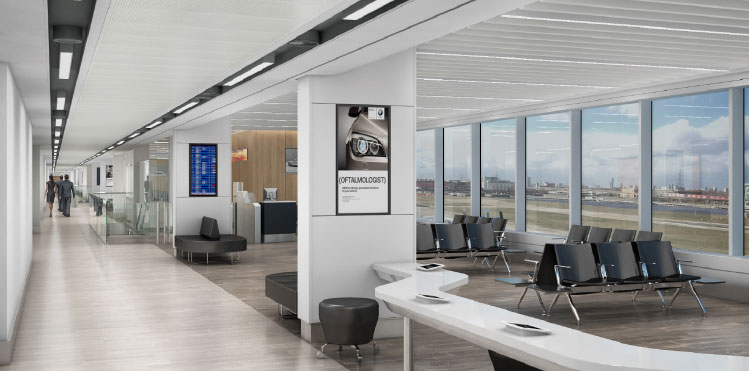
The London City Airport strategy is firmly predicated on delivering experiential excellence. Innovation permeates all aspects of the passenger journey, with the latest project being the £16 million (€22m) transformation of the Western Pier. Declan Collier, CEO London City Airport, briefed Ross Falconer on the developments.
London City Airport continues to break its own records on a regular basis – very recently it welcomed over 17,000 passengers in a single day – and the growth shows no signs of slowing.
This success is the result of a combination of interlinked factors – business travel is firmly back on the agenda, and there is increasing demand for the connectivity London City provides. Its airline partners are capitalising on this, launching new routes and increasing frequencies on existing services – BA Cityflyer, in particular, has increased the size of its fleet at LCY in recognition of the growth potential.
At the same time, London is moving east – both in terms of businesses relocating to the east of London, particularly in the tech sectors, and also in terms of these businesses’ employees settling in the east of London. “As a direct result, we’re seeing increases in leisure traffic – skiing during the winter, sun and second homes in the summer – and our airlines are happy servicing this market,” Declan Collier, CEO London City Airport, commented. “We saw 3.65 million passengers in 2014 – an 8% increase on 2013, which was itself up 12% on 2012. This year we are confident we’ll pass the four million passenger mark – and it’s highly unlikely we’ll stop there.”
Building on this success, the airport is embarking on a £16 million (€22m) development programme, which promises to transform the departures area. Work has begun to reconfigure the Western Pier, which houses 70% of London City’s departure gates, creating a bright, open plan space with modern seating, electronic boarding gates, workspaces, quiet areas, and charging points. It is a true transformation, with the total area increasing by some 84% to 1,780sqm, making space for new retail and food & beverage outlets, and 600 additional seats. Completion of the project is expected in Q3 2016.
‘Speed and a premier customer experience’

Declan Collier, CEO London City Airport: “We are investing heavily in IT infrastructure currently – infrastructure that will future-proof the airport and ensure that it is built with the capability of incorporating future technologies.”
London City was built in 1987 and, aside from some refurbishment and internal remodelling in 2010, is very much the same building it was 28 years ago, but handling millions of passengers rather than thousands.
Collier speaks passionately about the “LCY customer proposition of experience excellence”, and the Western Pier development will be cutting-edge in design, in use of space, and in use of materials. “I think I can safely say that our regular customers won’t recognise the Western Pier once the works are complete. We’re widening it, we’re opening it up, and we’re moving the gate lounges – currently at ground level – up to the level of the rest of the facilities,” Collier explained. “There will be quiet areas, areas suited to working, retail amenity, food and drink provision, and some 600 new seats to cater for our increased passenger numbers. All of this will be provided without damaging or taking away from our central propositions of speed and a premier customer experience.”
The need for internal refurbishment and reconfiguration has become more pressing since the recent refusal of planning permission for the wider City Airport Development Programme. Work on the Western Pier is being carried out under ‘permitted development’, which means it doesn’t require planning permission. The City Airport Development Programme (CADP) would have seen extensions to the existing terminal building, as well as new aircraft stands, providing capacity for 120,000 flight movements and six million passengers annually. “Unfortunately – and inexplicably – the Mayor of London has directed a refusal of permission for the works and we’re looking at a minimum 12-month delay while we appeal the refusal,” Collier said. “It sends the wrong message about investment in the east of London and London generally, and seemingly disregards the 2,000 employment opportunities that the CADP will create, as well as the £1.5 billion (€2bn) of annual economic impact that an expanded airport will deliver.”
Future-proofing the airport
It’s clear that the Western Pier is of great importance to the airport in terms of maintaining its reputation for excellence and quality, and the same can be said of its investment in technology to expedite the passenger journey.
London City certainly has a progressive policy towards innovation. It calls this the ‘Smart Airport Experience’ – the use of new and state-of-the-art technologies to enhance the customer journey through the airport. “We are investing heavily in IT infrastructure currently – infrastructure that will future-proof the airport and ensure that it is built with the capability of incorporating future technologies,” Collier enthused. “As an example, we have already implemented innovative crowd-sensing hardware that provides us with real-time information on journey times, passenger flows and space utilisation.”
This data – a real-world example of the Internet of Things in action – allows the airport to prioritise staffing, make investment and infrastructure decisions, guarantee its journey time promise, and enhance the customer experience through the provision of remote purchasing capability for retail, food & beverage, and at-seat service.
A central goal is to automate as much as possible of the complete passenger journey. Check-in/bag drop kiosks provided by Phase 5 Technology allow for a common-user check-in facility, at which the customer can weigh and tag a piece of baggage, and tender payment for any excess. The machines have reduced check-in times to as little as 55 seconds.
Meanwhile, ‘Gen 2’ security lanes have increased the amount of trays processed per hour by more than 100%. Time spent in security at London City is rarely more than seven minutes, even at peak.

The Western Pier transformation, expected to be completed in Q3 2016, will be cutting-edge in design, in use of space, and in use of materials. London City is creating a bright, open plan space with modern seating, electronic boarding gates, workspaces, quiet areas, and charging points.
“Passport e-gates were installed in the immigration area in late-2014 – and while these are hardly ground-breaking in terms of technology, the reaction of our customers has been,” Collier added. “When the gates were installed, we were informed that, from experience at other airports, we could expect a maximum of 40% of passengers to use the gates. We currently have the highest utilisation rates in the UK, running at around 70%. International arrivals at LCY, with carry-on bags – from plane to train – are rarely more than five-and-a-half minutes, again, even at peak.”
A record number of travellers used London City in 2014 and the airport is on track for another record this year. The Western Pier project will help facilitate this continuing growth, while maintaining a high quality airport experience with speedy check-in and arrivals, and an unrivalled location so close to central London.







